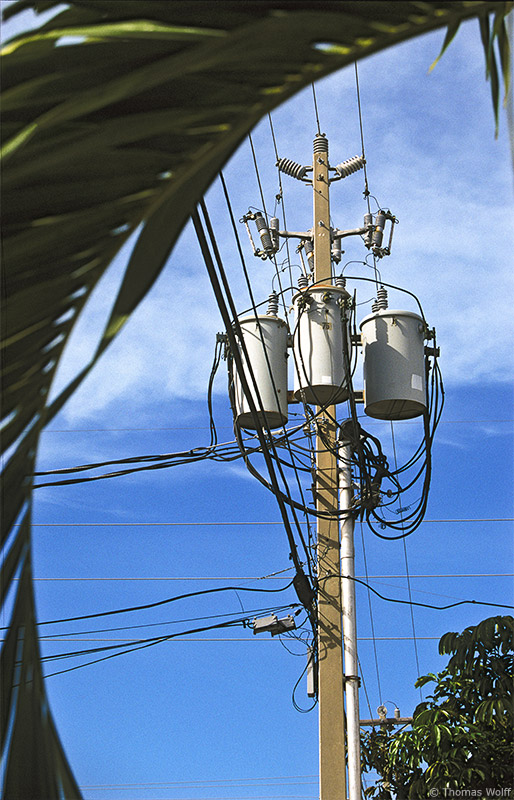Street Life

Electrical current is very thin, so you don't need a hose to transport it. It is so thin that a simple wire is sufficient, as thin as it may be. You cannot transport electrical current through wood; presumably because wood absorbs it. The same applies to plastic.
If electrical current is not used, it is not thin any longer. Quite the contrary, it becomes rather gooey so it won't ooze out the wall socket. That comes in quite handy; just imagine having to plug wall socket all the time. It is still somewhat unclear how electrical current knows when it is used and when to become thin. Apparently it senses the moment when someone enters the room with an electrical appliance.
Electrical current is not only very thin, it is also invisible. Therefore you cannot see whether or not there is current in a wire. To find that out, you'll have to touch the wire. If it hurts, there is current in the wire. This is called an electric shock. Sometimes you don't feel anything at all - either because there simply is no electrical current in the wire or because you're suddenly dead. The latter is then called exitus
Electrical current is multi-purpose. You can cook with it, drill holes, heat your house, listen to WBOR, charge your cell phone, and much more.
If you connect the ends of two wires carrying electrical current, it throws out sparks and bangs. That is called a short-circuit. For this, you've got fuses that blow out.
Apart from electrical current in wires, there is "electrical current 2 go". It comes in small colorful containers. Technicians call them batteries. Of course, trapped in the small and dark container, electrical current cannot sense whether it is used or not. That is why it occasionally for no apparent reason leaks out and eats away everything.
There are several types of electrical current:
- Heavy current: called that way because you can do heavy-duty things with it.
- Alternating current: called that way because you can always alter the things you do with it.
- Direct-current: called that way because it always directly hits the spot.
Up to this day, science is occupied by one question that even this Web site cannot comprehensively clarify: What the heck is electricity? And where does it go once it has left the toaster?
Shot somewhere in Florida. USA. December 1995.
Originally a color slide, shot with a Canon T90. Scanned with Nikon Super Coolscan 5000.